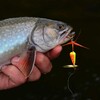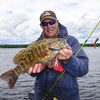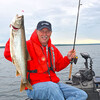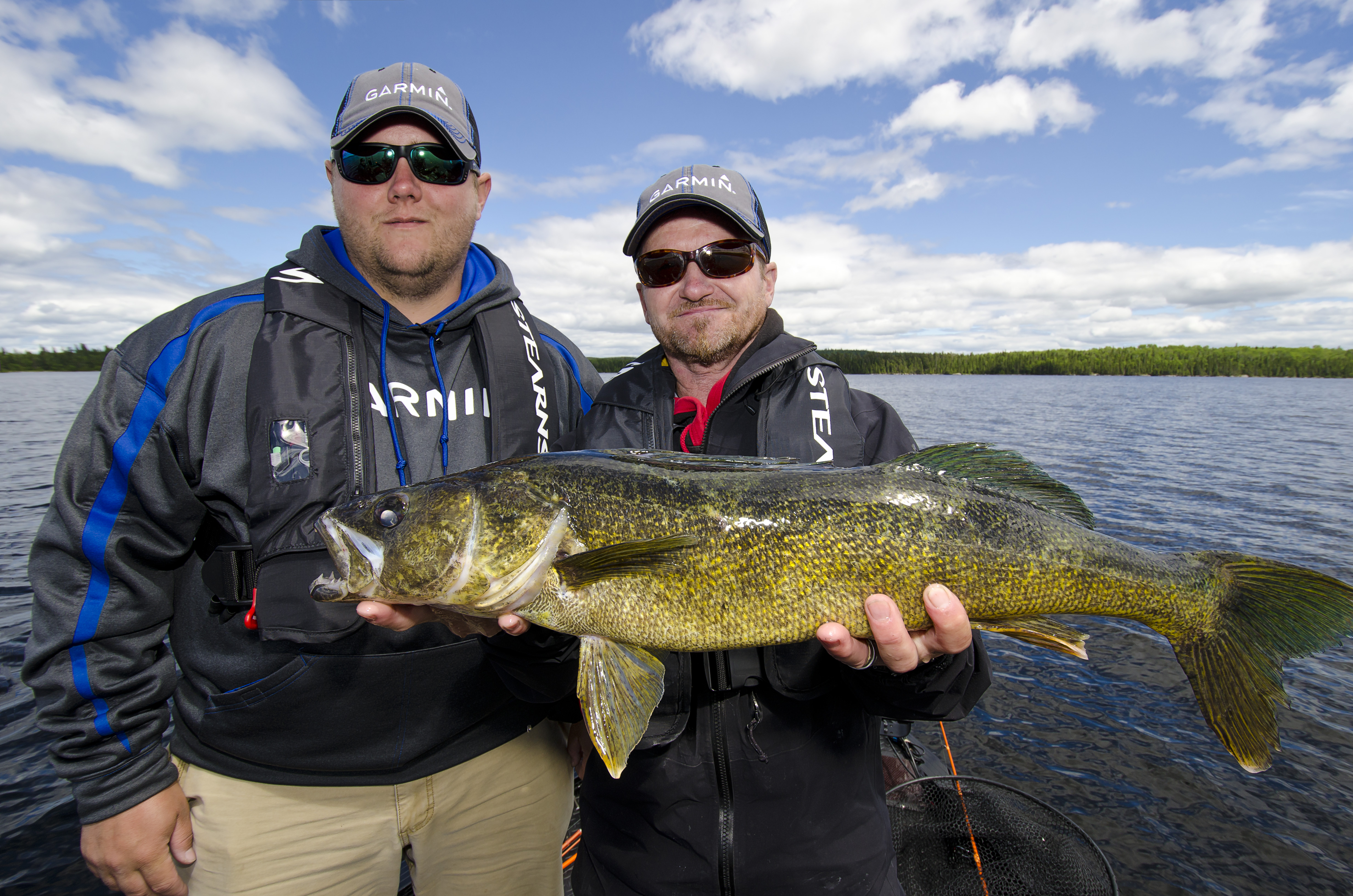
Spinning Tackle: The Workhorse of Freshwater Fishing

Spinning rods and reels are essential equipment on most fishing adventures. All across Ontario’s Algoma Country, spinning tackle not only ranks high among anglers targeting walleye; the same type of gear is mandatory for many trout, bass, and even pike fishing presentations.
Designed primarily for light line fishing presentations, spinning tackle shines best when combined with premium quality, low-memory lines like monofilament and fluorocarbon. Depending on the target species and the presentation at hand, the most common line sizes for spinning include 4-, 6-, 8-, 10- and 12-pound tests.
Super braids also function well on spinning rods/reels for some specialized fishing applications like vertical jigging walleye, drop shotting for bass, or fishing heavy cover for bass, northern pike, and muskie.
Spinning gear is so popular that selecting gear from the many brands, models, actions, and lengths available can be overwhelming. It’s also easy to get confused by the different rating systems and trade names manufacturers use to describe relative rod sensitivity.
A Word on Sensitivity
Rod sensitivity is an often misunderstood term. Sensitivity, or a rod’s ability to telegraph bites, is relative to both rod weight and stiffness. Lighter and stiffer action rods are more sensitive than heavier and softer action models. Heavy or soft action rods tend to absorb the telegraphing effect of the rod, robbing the angler of that all-important "feel."
It will come as no surprise that quality spinning rods are made of graphite, but it might surprise some readers to know that graphite rods come in many different grades or modulus ratings. The higher the modulus rating, the lighter and more sensitive the rod becomes to a point. Making a rod to light can also cause the rod to become brittle and easily broken. Currently, the highest modulus rating practical for spinning rods is a 64-million modulus.
Unfortunately, as the modulus rating increases so does the cost of manufacturing the rod. Luckily not all spin fishing applications require expensive high-modulus rods. The best advice is to let the presentation dictate if a moderately priced or more expensive rod is the best possible choice.

How Much Sensitivity is Needed?
Super-sensitive rods are a tremendous asset when using techniques that require the angler to detect subtle strikes. Casting jigs or tube baits, vertical jigging, pitching plastic worms, drifting spawn bags, and live bait rigging are a few of the common fishing methods that cry out for rods that are as sensitive as possible.
Not all spin fishing situations require rods of this calibre. Take slip bobber fishing, for example. The rod’s primary function when fishing bobbers is casting, not detecting strikes. It simply isn’t necessary or advisable to use an expensive high-modulus rod when fishing floats. The same is true when trolling, casting crankbaits, pier fishing bottom rigs or dead-sticking a floating jighead for walleye. For these fishing presentations, a moderately priced 40-50 million modulus graphite rod becomes a more practical option.
One or Two-Piece Rods
One-piece rods tend to be a little stronger, lighter, and more sensitive than two-piece rods. This stated, try fitting a seven-foot one-piece spinning rod into a Fiat Mini Coupe.
Two-piece rods are a necessity for many anglers. Two-piece rods are more practical for the travelling angler who must make his or her gear fit into limited spaces. Also, it’s important to note that the loss of strength and sensitivity is modest at best with two-piece rods. Truth be told, most anglers could not detect the difference between one- and two-piece rods by simply fishing them.
The Reel Deal
It makes no sense to match up a super light high modulus rod with a spinning reel that’s unnecessarily heavy. Anglers tend to select spinning reels that are too large and heavy for the job. The line diameter you’ll be using most often should be used to determine reel size.
For example, if you’re purchasing a spinning outfit for pitching tiny crappie jigs, a reel with a line capacity of 80 yards of the 4-pound test is perfect. When vertical jigging for river walleye, a reel with a line capacity of 100 yards of the 6-pound test makes sense. If you’re interested in a spinning combination for casting tube jigs to smallmouth, you’ll want a reel that can handle about 150 yards of an 8-pound test. When big northern pike are the target species, select a larger reel capable of handling 150 yards of 30- to 50-pound test super braid.

Smooth As Silk
Reel smoothness boils down to how many ball bearings are used in the construction of the reel. Spinning reels are generally manufactured using expensive ball bearings or somewhat less expensive bushings. Reels that feature five or more ball bearings rotate smoothly and suffer from less bail wobble and vibration. Reels with fewer ball bearings, or ones produced using bushings, are just as functional in terms of how they handle line retrieving chores, but they do it with a little less class. Think of it this way both a Cadillac and Kia are viable forms of transportation.
Summing It UP
When travelling or storing gear at home, use a quality rodailyd tube and reel case to protect your investment. Good rods and reels are expensive, but given reasonable care, they can be expected to last for many years.
High-end rods often come with lifetime warranties. Be sure when buying one of these rods to keep the sales receipt in a safe place. Most manufacturers will not honour lifetime warranties unless the angler has proof of purchase.
Spinning gear is the workhorse of freshwater fishing. Just about anything with fins can be targeted successfully using suitable spinning rods and reels.
Recommended Articles

The Group of Seven in Algoma

9 Facts to Know about the Agawa Canyon Tour Train




























